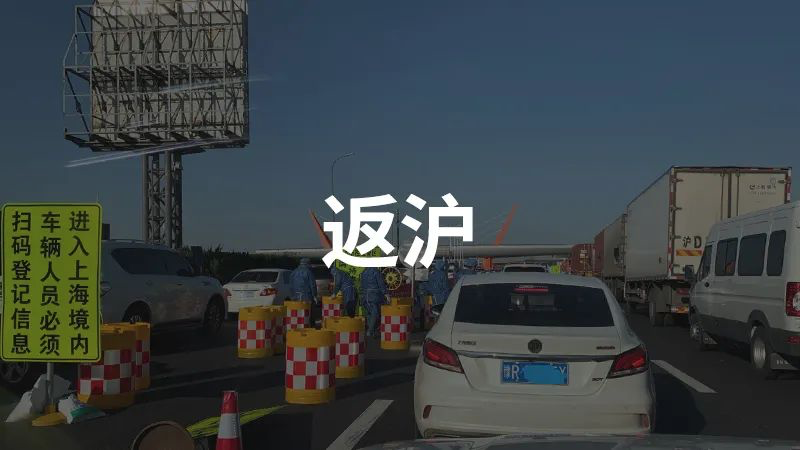During the 2020 Spring Festival holiday, I don’t know how many days you stayed at home, including two days of round-trip to Shanghai, I stayed at home for a full 28 days. I never thought that I would have the opportunity to stay at home for such a long time after graduating from university.
Before I went home, I planned to go on a self-driving tour with friends during this rare holiday. We planned to drive 1000 km and go to a island in Zhangzhou, Fujian to see the sea. We also wanted to experience the performance of the ideal ONE on long-distance driving, and let those Old School ones around us who have not received fresh technology feel the convenience of assisted driving and intelligence.
When I was still looking forward to showing off the assisted driving abilities on the winding highways in Fujian, the novel coronavirus began to spread. More and more provinces and cities had confirmed cases. In view of my idea of not causing trouble to the country, we canceled this trip.
I stayed at home obediently until after the sixth day of the Chinese New Year, but the epidemic did not show any signs of alleviating. The resumption of work was postponed to February 10, and the control of more and more provinces and cities became stricter.
Taking our community as an example, since February 5th, it has been completely closed off, and we must show entry and exit permits to enter or leave. Each household only has one entry and exit permit available, and entry and exit must be registered, with staff on duty 24 hours.
In order to avoid the peak of returning traffic on February 9th and the last day of free toll collection on February 8th, I set my return time to February 7th. So, the question is, why did I only leave on February 17th if I planned to return to Shanghai on February 7th?
I was placed under mandatory home medical isolation by the community.
On February 6, my dad needed to go to Jinhua for work. After seeing this picture online, he decided to take a high-speed train, and came back on the same day.
Although there was no talk of repatriation for high-speed train travelers, after returning to the community, registration was still required. When it was learned that he had returned from a different city, he was ordered to undergo 14 days of home quarantine.
We had thought it would be symbolic isolation, and we just needed to minimize the frequency of going out. However, after signing the letter of guarantee, the community workers sent a photo of our house door sealed with tape.
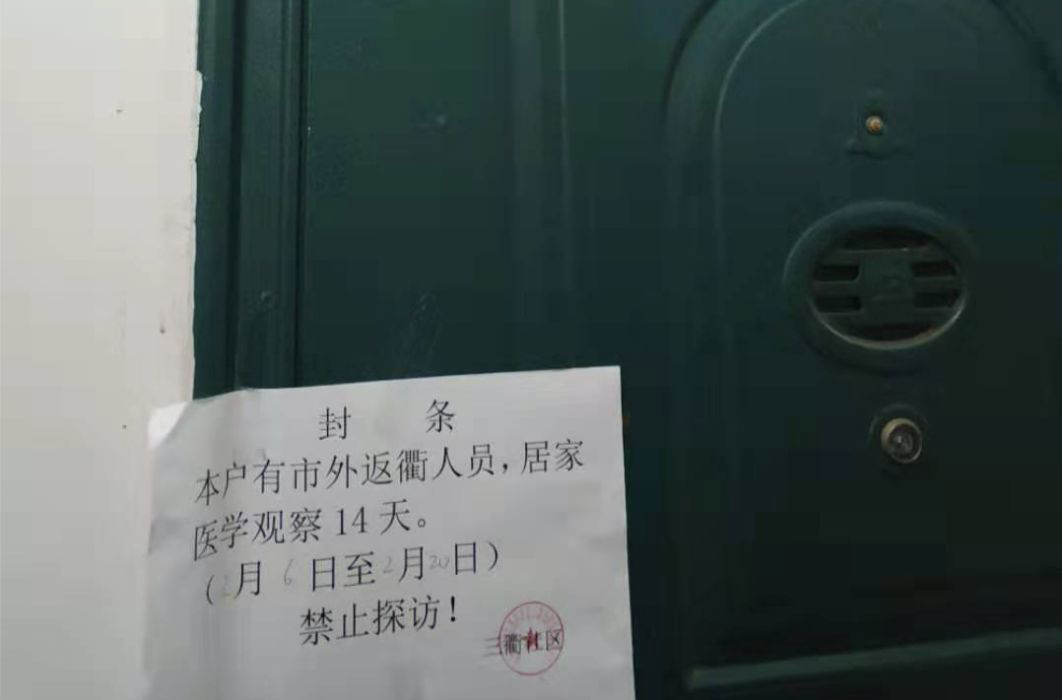
All non-emergency events are not allowed to go out. If you have needs such as grocery shopping, garbage disposal, and parcel delivery, they must be reported to the community staff to be completed. If the seal is opened privately, legal responsibility shall be investigated. Therefore, the plan to return on February 7 was completely abandoned after the seal was photographed on the door on February 6.
The problem came again. It should be isolated for 14 days. Theoretically, the isolation will not end until February 20. Why did I return to Shanghai on February 17?
Of course, it is because the epidemic has improved. The daily number of newly diagnosed in Zhejiang Province has continued to decrease. In order to create conditions for resumption of work, Zhejiang Province has launched a “health code”, which is divided into “red code”, “yellow code”, and “green code” based on personal actual situation. My father returned from Jinhua and belongs to a low-risk area of the epidemic. After receiving the “green code”, he was immediately released from medical observation and isolation.
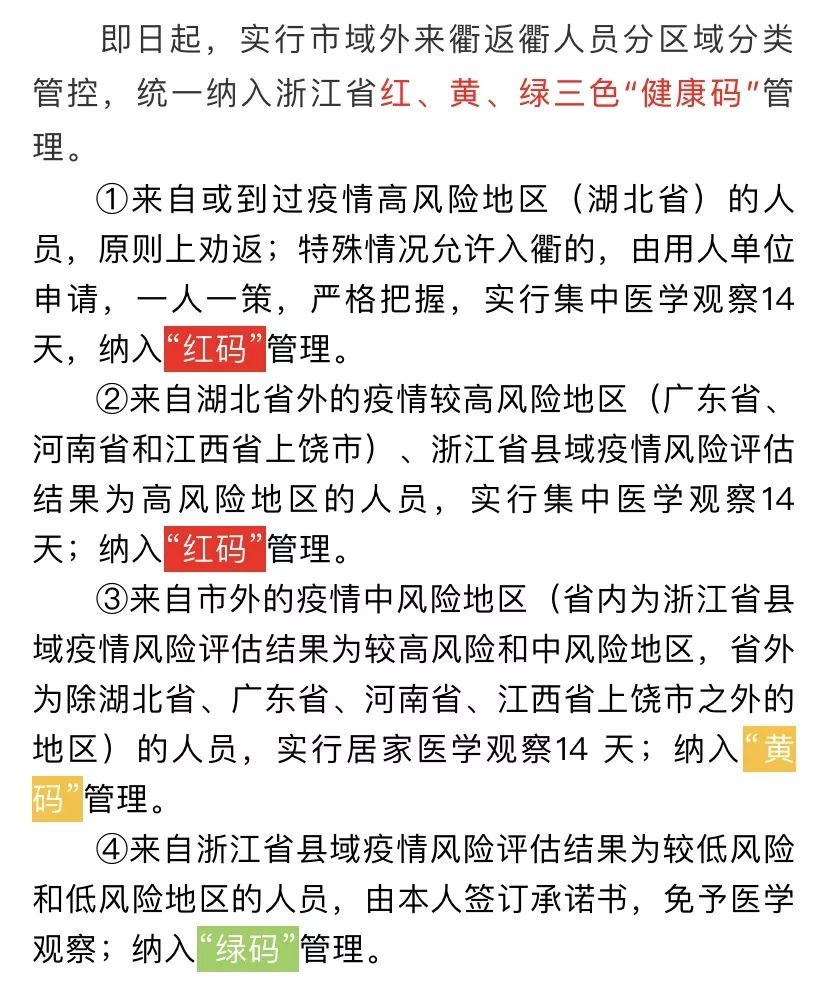
Although these ten boring days of not being able to go out indeed saved some mask supplies (/@rofl).
After the ban was lifted, I naturally prepared to “once again” return to Shanghai. Before departing, I confirmed two pieces of information:
First, filling out the “Health Information Registration Form for Coming to Shanghai” on the Health Cloud in advance can enter Shanghai.
Second, the community where I live allows outsiders to enter.
These two points are also reminded in the navigation.

Considering that I might also be isolated at home for 14 days after returning to Shanghai, I went to the supermarket to purchase some necessary items before leaving. In addition to some gifts from my parents, the ideal ONE’s trunk was stuffed full. PS: The ideal ONE trunk has no threshold, so after filling it up, I am always worried that things will shift and fall out when I open it again.
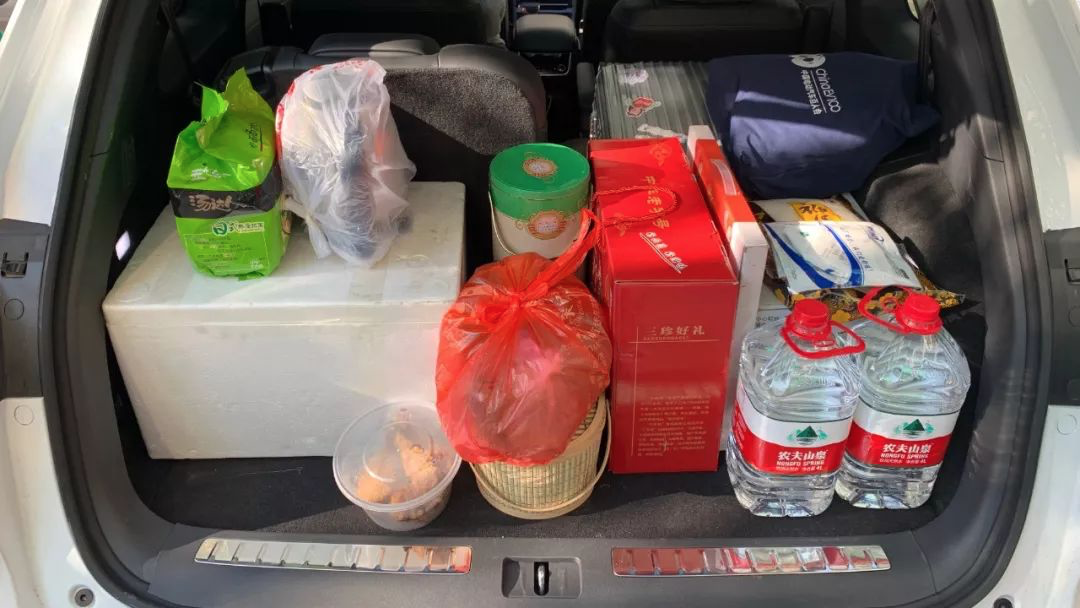
I left exactly at 9 o’clock in the morning. The control in exiting Quzhou was not strict. Seeing your ID and measuring your body temperature is enough.
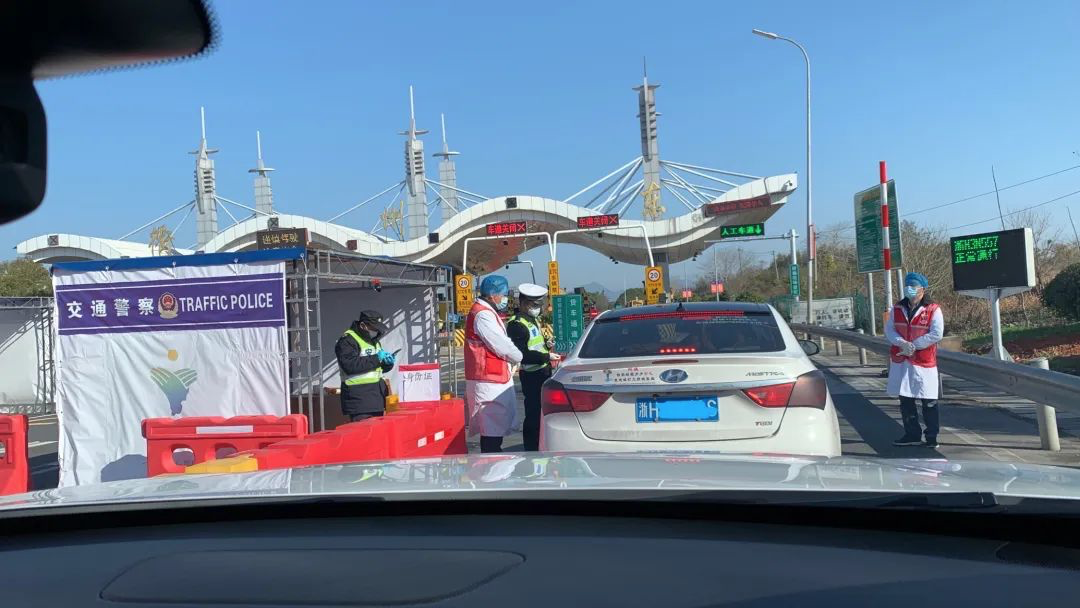
I returned to Shanghai and took my father to Jinhua, so he drove during the Jinhua trip.After being quarantined at home for more than ten days, my car was left unattended for over ten days. The remaining battery level was 25\%, and after 11 days, it dropped to 17\%. Calculating the total loss of pure electric driving range was 15 km, which means an average of 1.36 km per day. To avoid excessive battery drainage, I restrained myself from checking the vehicle status on the mobile app every day.
Each time the vehicle status is checked, the vehicle needs to be awakened to upload data, and the more times it is awakened, the more power it consumes. The ideal mobile app for checking the vehicle status does not automatically update information upon entering the app like Tesla and NIO’s mobile apps. Ideally, users have to manually refresh the vehicle status by pulling down the page.
This setting can effectively avoid frequent battery drainage caused by users’ idleness, but it also requires users to develop a habit of refreshing the vehicle status before every remote control operation.
As for the problem of battery drainage while parking the vehicle, I can tolerate a loss of slightly more than 1 km per day. However, I still hope that it can be reduced further. In Ideal’s upcoming OTA plan, the battery charging strategy will be optimized to avoid power battery’s excessive loss due to overcharging the battery.
Before leaving, my parents repeatedly asked me whether I needed to charge the car and whether the car could be driven when the battery was depleted. Although they knew it was a hybrid car, they were still worried.
I wanted to charge the car before leaving, but I remembered that I had given up halfway earlier due to low battery temperature, and the fast charging rate was only slightly more than 20 kW. After all, this is a car that can be driven with only gasoline.
After getting on the highway, my dad voluntarily turned on the driving assistance system, although I had only used it once before. But that one time had already left a deep impression on him, and he felt much more relaxed after experiencing it.
What surprised him even more was that the car could complete the entire process of changing lanes and crossing the opposite lane without assistance (with lane markers).
A few words to add here: my dad was very nervous the first time he used it, and often “fought” with the car for control. He would often ask me what to do when he saw a bend ahead or a car cutting in or when he needed to change lanes. But after a short trip with my guidance, he became familiar with it and found it much easier to use. In my father’s words, “I have established trust with the car.” My mother’s comment was, “It’s good to have this feature, so that your father can be more well-behaved and not speed.”
I must also praise the ONE’s assisted driving feature. It monitors the driver’s steering wheel torque and grip force, which made it much easier for me to teach my dad to use the feature. After all, the cost of “gripping the steering wheel firmly” is much lower than that of “twisting it a bit so that the car senses it but not too hard to the point where the assisted driving feature is turned off.”
Although my dad is becoming more and more proficient with the feature, I still remind him frequently – and I also want to remind everyone using the assisted driving feature – that it is only an assistance tool. While using it, you still need to keep an eye on the road ahead. If a situation arises that goes beyond your psychological safety line, you must take control of the vehicle proactively, rather than waiting for the car to react.
After I dropped my dad off at the Jinhua West exit of the high-speed tollway, I continued driving to Shanghai. Since it was a U-turn directly on the tollway entrance, the entire process was rather hasty. After getting on the tollway, I discovered that the seat and rearview mirror were still adjusted to my father’s preferences, and that the seat memory settings couldn’t be switched during operation. Since it was inconvenient to stop the car once I got on the highway, I had to make small manual adjustments instead.
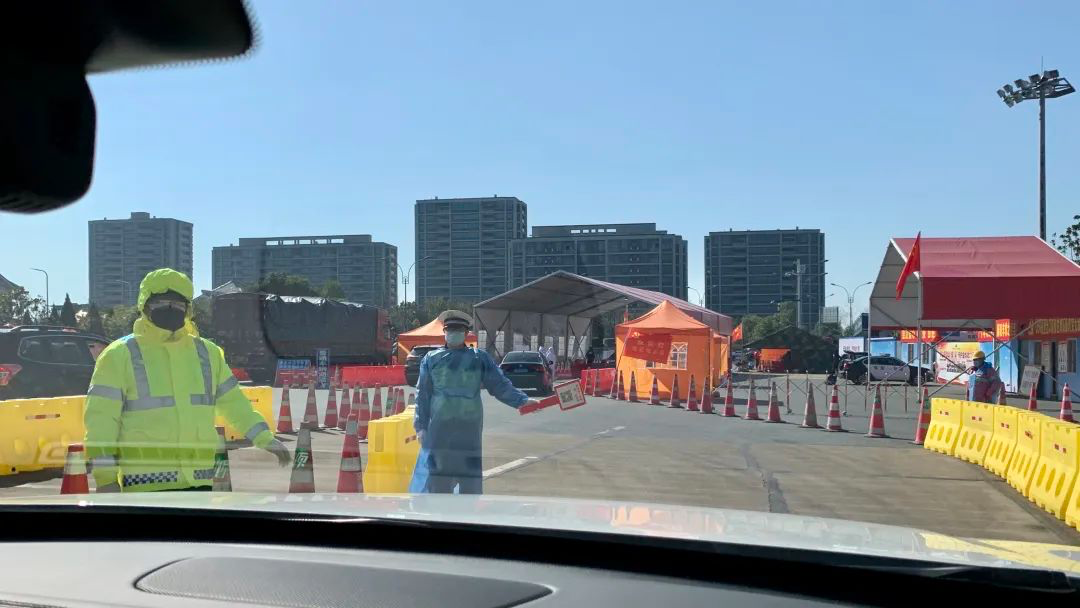
This is something that Ideal Auto will optimize in upcoming Over-The-Air updates, so that seat memory settings can be adjusted during operation.
As it was about 10 o’clock in the morning and the company had a meeting, I went straight to the first service station after getting on the highway, where I charged the car and attended a phone conference while waiting.
The charging piles at the Jinhua service area are of relatively high quality on this Shanghai-Kunming highway, and the peak output power can reach 90 kW. If any electric car users happen to pass through this area, I would advise setting up the charging station at the Jinhua service area.
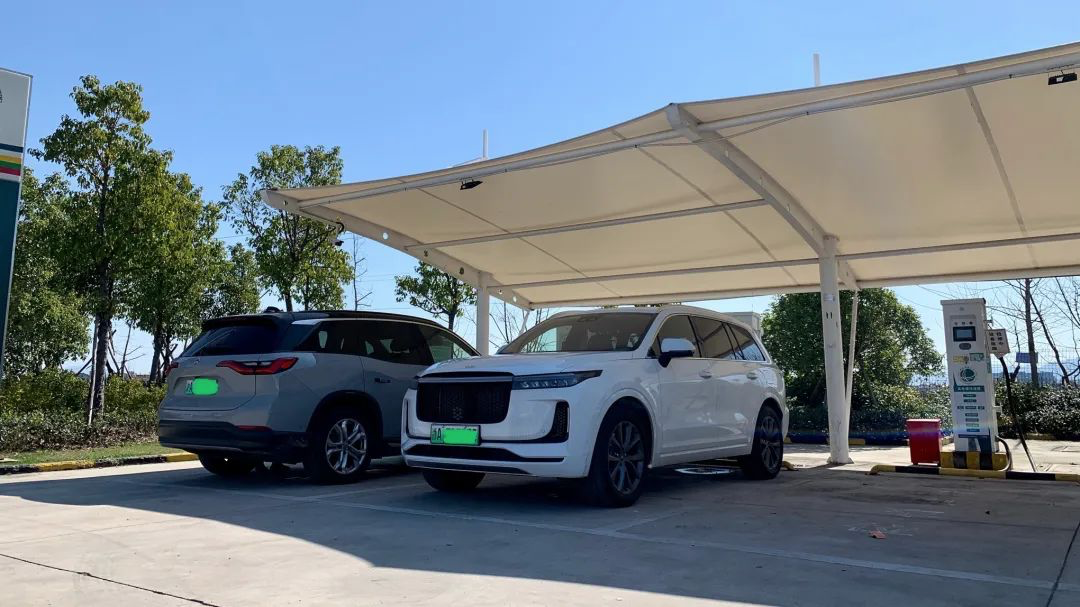
After the meeting, I didn’t linger, unplugged the charging cable, and went straight to refuel. There were relevant guidelines posted next to each gas pump, advising drivers to avoid unnecessary contact.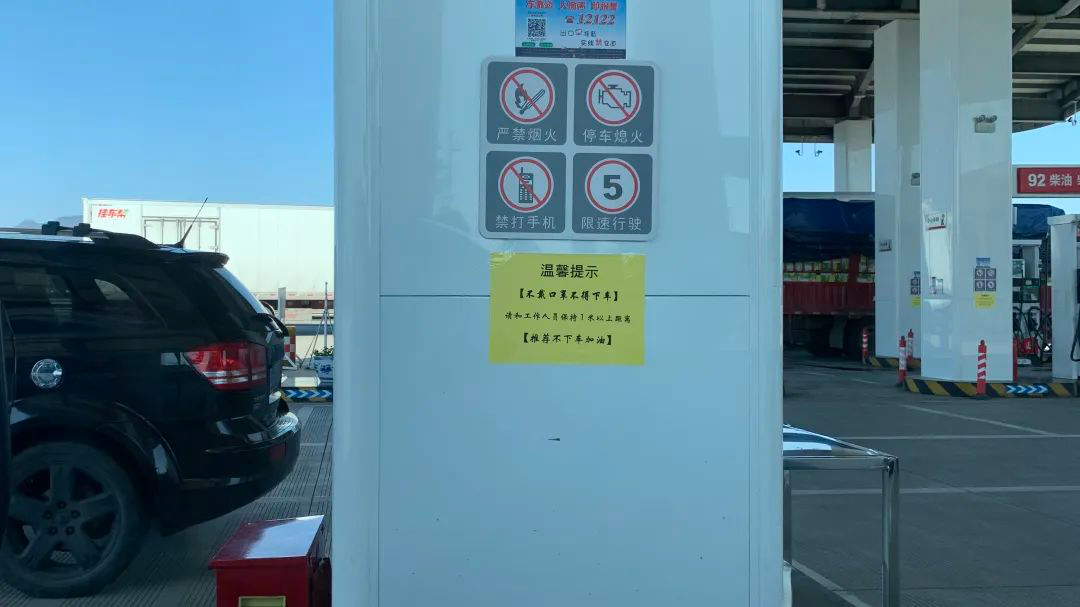
Even when buying things at the gas station, there is a one-meter isolation line outside the payment counter. All items are passed through the tray, and the workers at the payment counter are fully equipped with masks, coats, and gloves.
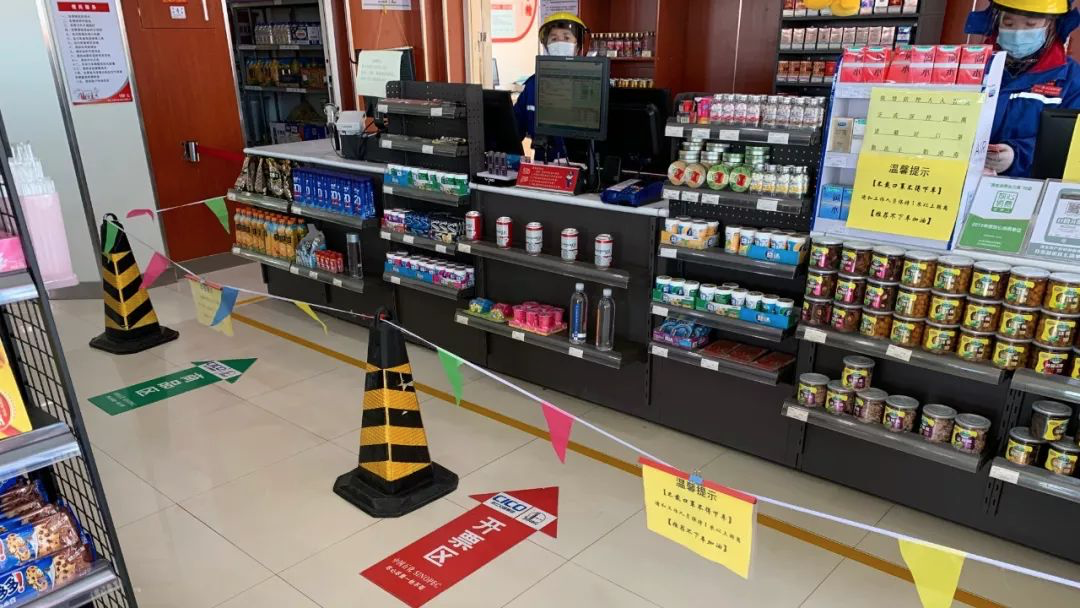
After leaving the service area, I received a voice message from 10086 reminding me not to go out during the epidemic. It’s about two hours since I left Quzhou. I don’t know if anyone has received this kind of phone reminder.
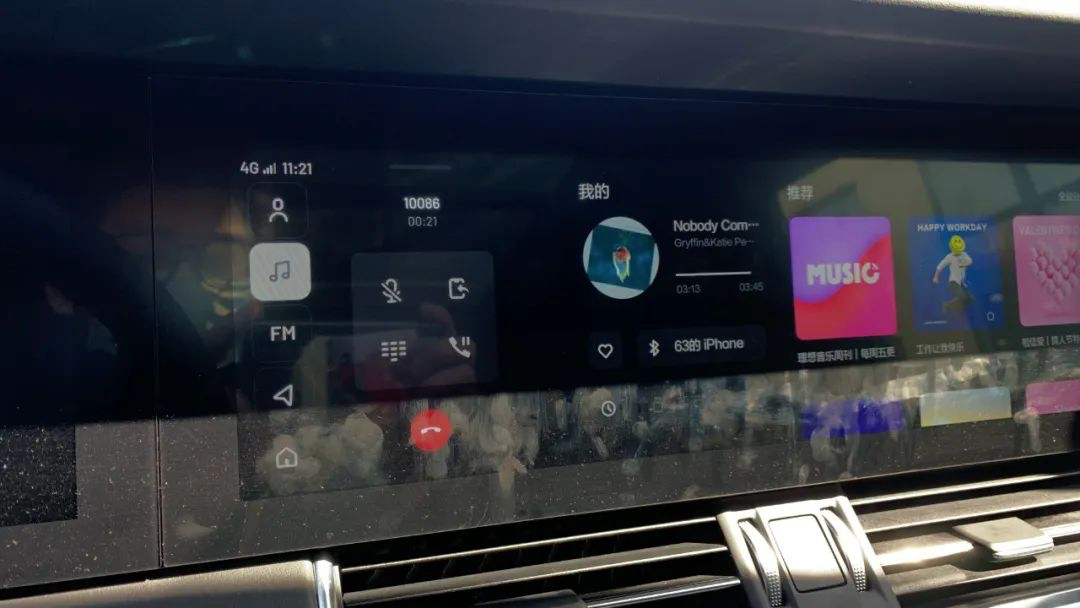
On the main road, I turned on the assisted driving function and continued to drive calmly. The AI-assisted driving function of IDEAL ONE supports automatic lane change when turning on the signal light. The whole lane change action is also very smooth and practical on the highway, but unfortunately, IDEAL ONE can only recognize conventional dotted lines for now. It cannot automatically change lanes on the lane with longitudinal speed humps on both sides of the road. Hopefully, an optimization will be made through OTA in the later stage.

I found out it was already noon shortly after setting off. Since I wasn’t in a hurry, I decided to enter the service area and have lunch. I had been in hybrid mode before, but now that I have time to charge, I switched to pure electric mode. Due to the impact of the epidemic, the once-bustling Xiaoshan service area is not as crowded as before.
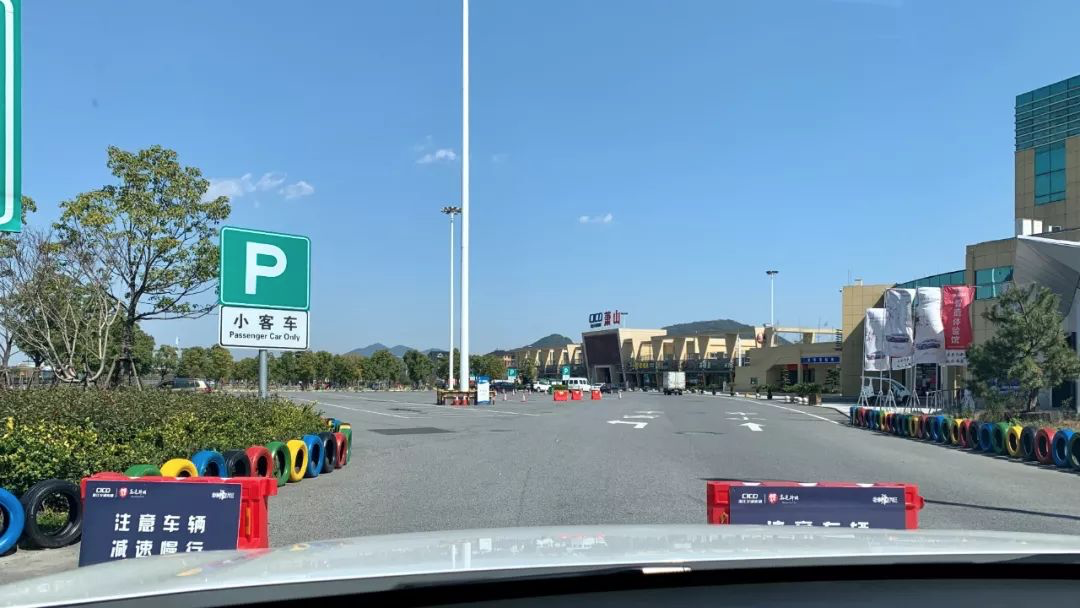
Although there aren’t many people, protective measures should not be ignored. When using public facilities, it’s important to wear gloves for peace of mind.
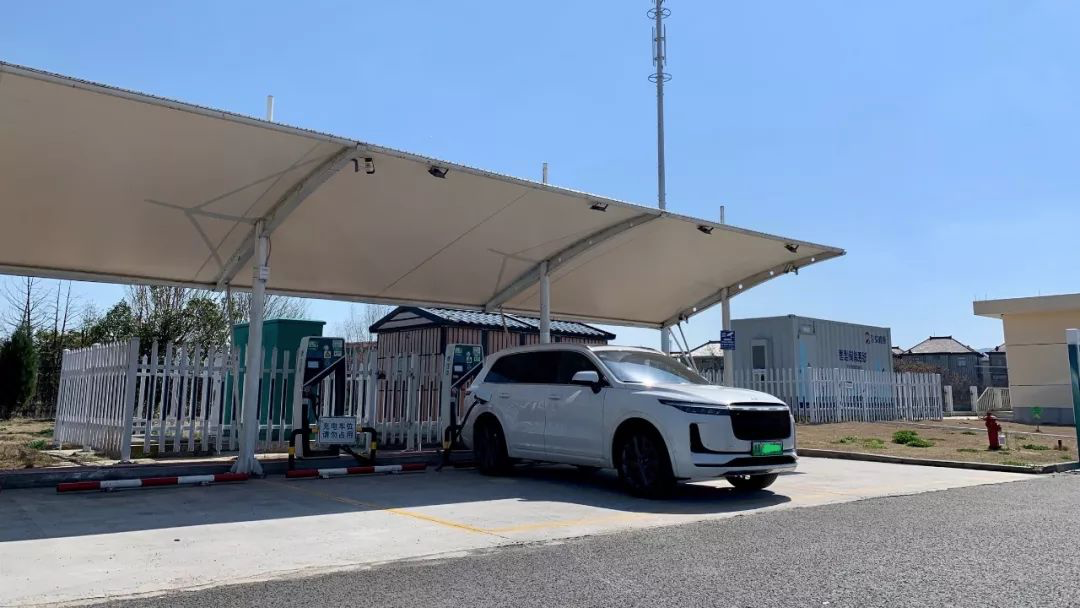

After passing Xiaoshan service area, half of the journey has been completed. With sufficient fuel and electricity, I drove straight to Shanghai.Talk to you guys a bit about another impressive feature of the Ideal ONE that left a lasting impression on my dad: “contactless” access. With the phone bound to the APP account and Bluetooth key authorization enabled, you can simply unlock the car by approaching it with your phone and drive off after seating and fastening your seat belt, stepping on the brake, and shifting into gear. Parking is just as easy — press the “P” button and you’re all set! The APP allows you to remotely check on the car’s status, so forgetful drivers won’t have to worry about whether they locked the car or not. Just open the APP and check to put your mind at ease.
Although more and more car models can now be remotely controlled by phone APP, only a few have truly optimized the experience.
After approaching the Zhejiang-Shanghai main toll station, the number of vehicles on the road gradually increased, and the display screens above the highway began showing a reminder to “open the windows for ventilation beforehand.”
Shanghai and Zhejiang have set up checkpoint stations at their border, where the temperatures of incoming people are measured to screen for illness, hence the navigation system showed that the 1.8 km traffic congestion ahead would take 1 hour and 43 minutes.
This is expected, so just queue up patiently. If friends plan on returning to Shanghai in the near future, they can stock up and adjust at the service area before entering the city.
I was still driving the Ideal ONE with its advanced driving assistance feature following the car in front of me when we entered the congested road. However, due to the extremely slow movement, the Ideal ONE’s driving assistance often paused the “cruise” function after a prolonged period of inactivity. P.S. The Ideal ONE’s driving assistance can still automatically follow the car within 120 seconds after braking.
In addition, if the driving assistance is manually turned off, it is almost impossible to restart it again during congested traffic, and you can only switch to ACC adaptive cruise control. The reason for this is simple: The Ideal ONE’s driving assistance uses a single-lens camera, so with a limited field of vision when following a car closely, it is difficult to identify the lane markings again, making it impossible to activate the driving assistance.During the more than one hour of traffic jam, the Ideal ONE pure electric vehicle drove at a slow speed because of sufficient battery power. The advantage of a hybrid vehicle with a large capacity battery is reflected in such road conditions, which not only avoids a large amount of unnecessary idle speed, saving fuel, but also effectively reduces carbon emissions.
In addition, a good sound system must have a quiet and practical environment. The experience of the same sound system is better on pure electric vehicles than on fuel cars.
Everyone was relatively practical when queuing without overtaking randomly. The road signs will indicate “Shanghai license plates keep left” and “out-of-province license plates keep right”, and there were also some QR codes for declaring “health cloud” on the roadside.
During this special period, there will inevitably be some fully armed vehicles on the road, and the impact on space is not small.
When approaching the checkpoint, the second lane on the left will have isolation piles to divide the traffic to both sides, and there will be staff standing in the middle. When approaching the checkpoint, you can merge into lanes 1 and 3 in advance to avoid long traffic jams (from past experience).
After completing the diversion, you will encounter the first wave of staff holding QR codes, requiring each member to scan and register information. It is recommended to do this in advance. WeChat and Alipay can be used. Looking at the fully armed staff, I felt a little uneasy in my heart, feeling like going from a safe place to another unsafe place.
Continuing to move forward, you will encounter traffic police responsible for checking the trunk to prevent “secretly transporting goods”. Ideally, you can control the opening and closing of the tailgate in the car, so as to avoid getting off the car. Psychologically, it feels safer not to get off the car (although it doesn’t matter anyway, as the windows are open for ventilation).
Continuing to move forward, the staff will ask how many people are in the car, and check if you have successfully filled in the “health cloud” and received feedback messages.Continuing forward (no picture here), there are two workers wearing pure white protective suits, masks, and goggles, who check for any other passengers in the car and require you to show your ID and QR code generated from the health cloud. After confirming your destination, they measure your body temperature and let you through.

So the traffic jam ends here and we have successfully entered Shanghai. The roads behind are very smooth. The 2 kilometers of traffic jam was completely electrically driven with the hot air conditioning on, and the power dropped from 72% to 64%.

As for whether you can enter the community, it depends on the restrictions of each community.
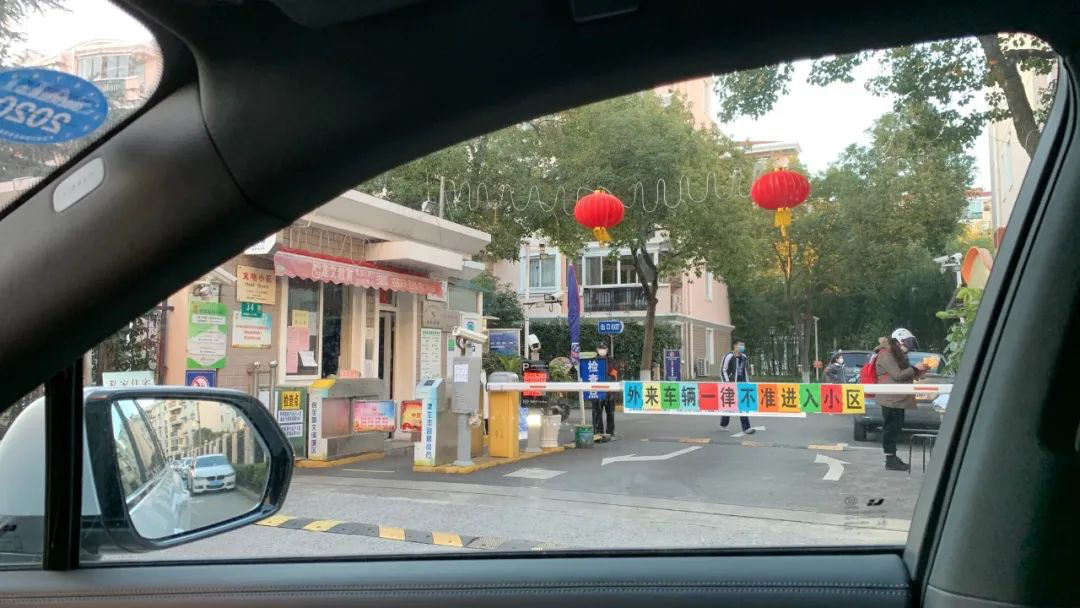
My return trip to Shanghai ends here. The entire journey was very smooth. There were no unusual situations at the service areas. The traffic jam at the Zhejiang-Shanghai border was expected. As long as you are well prepared in advance, the clearance speed is still very fast.
Finally, I would like to extend my highest respect to the frontline workers who are working hard. I hope this epidemic will pass soon and life can return to normal. In order not to trouble the organization, I started a new 14-day self-isolation after arriving in Shanghai.
This article is a translation by ChatGPT of a Chinese report from 42HOW. If you have any questions about it, please email bd@42how.com.
